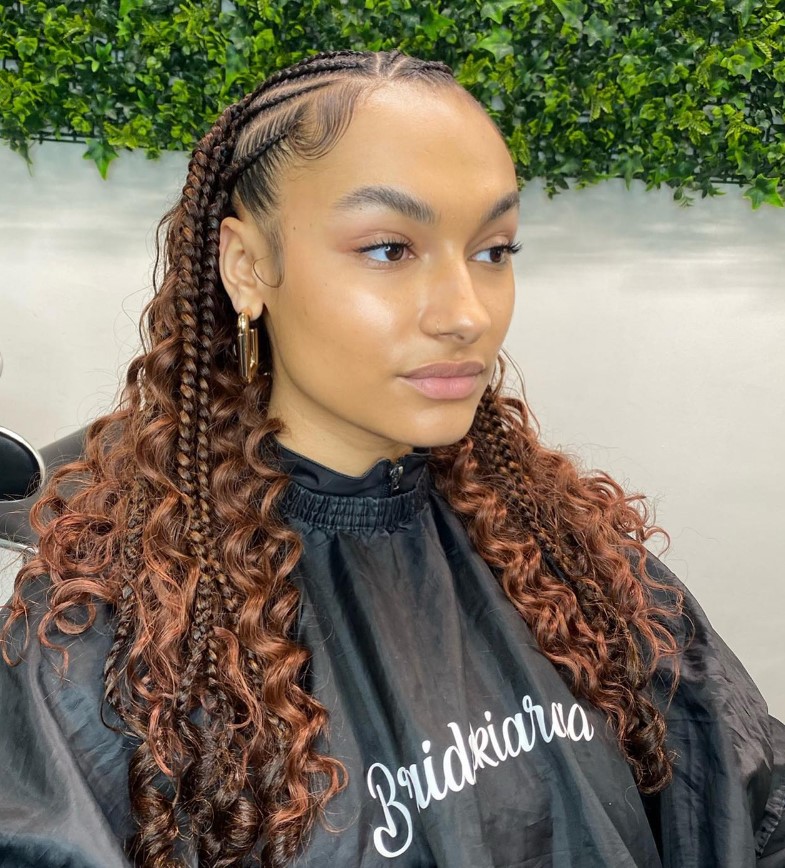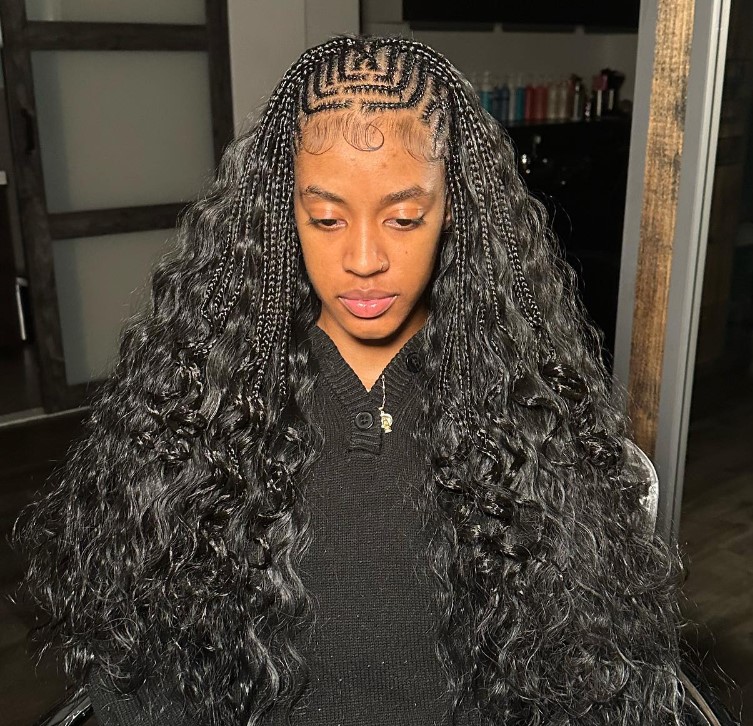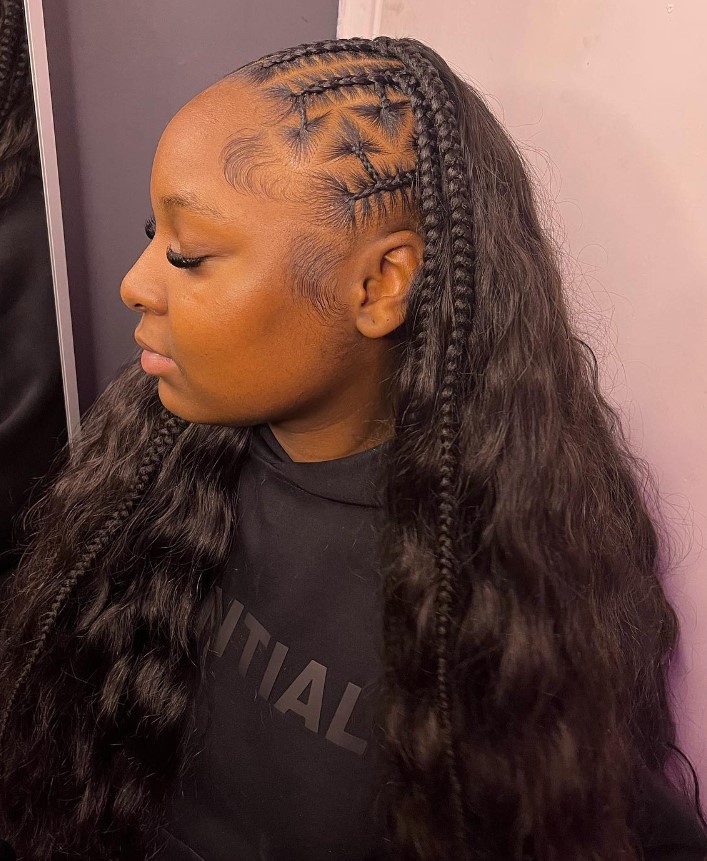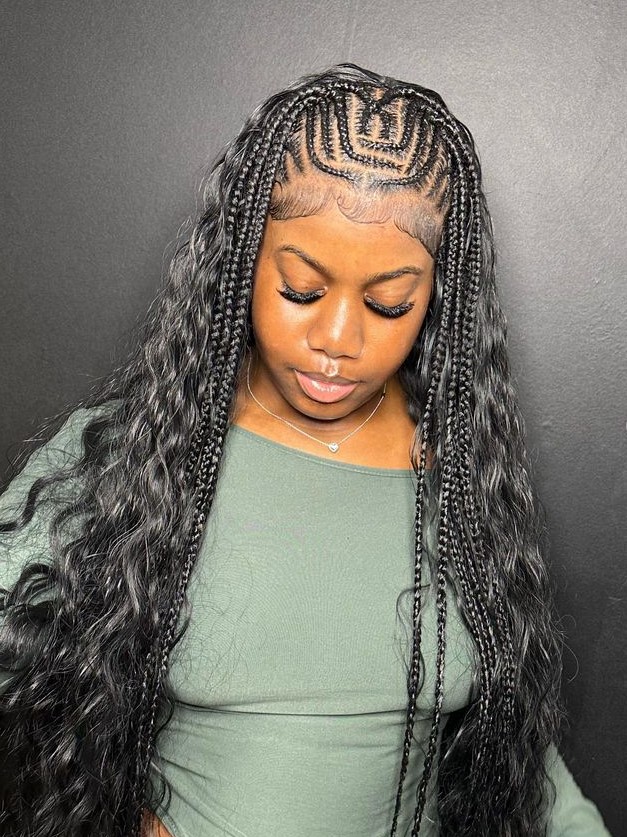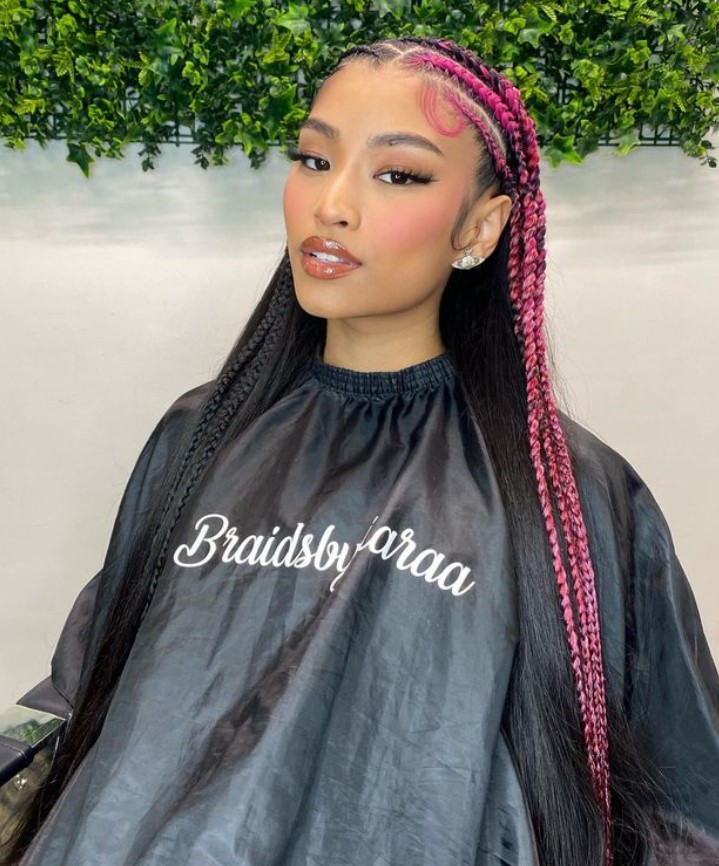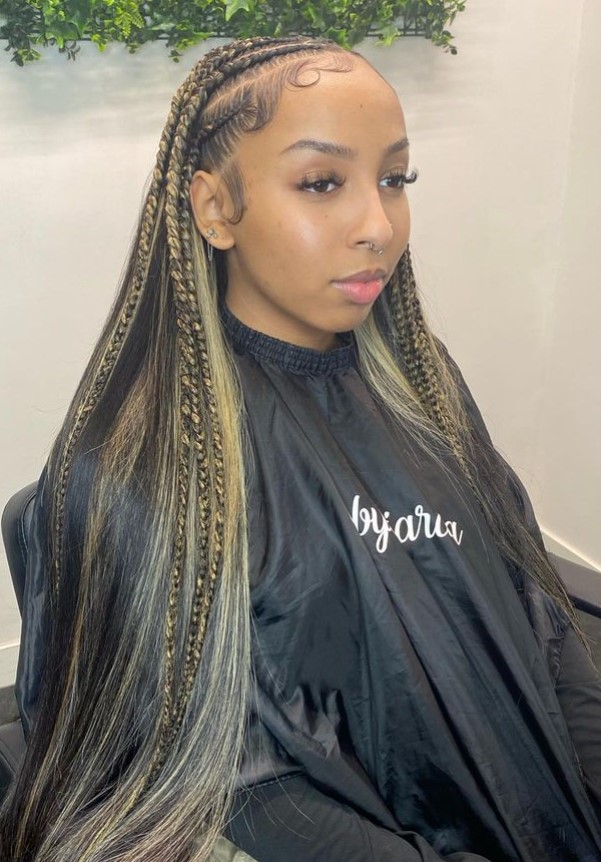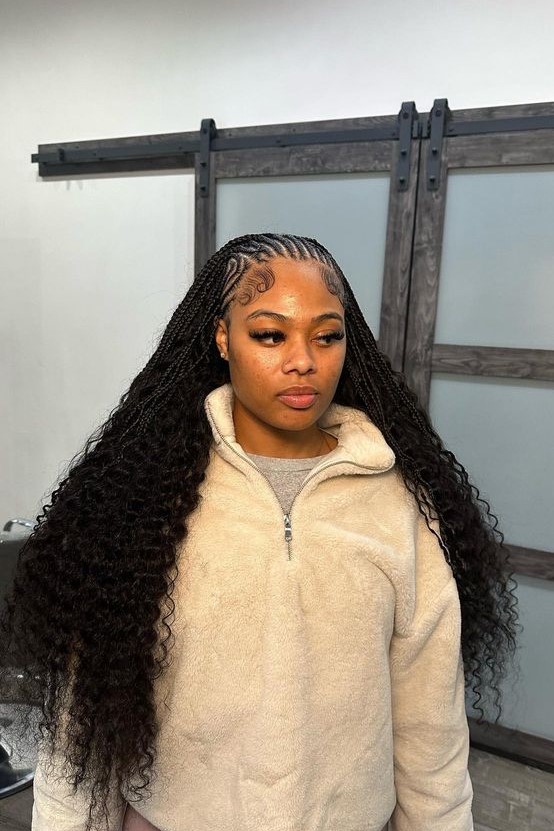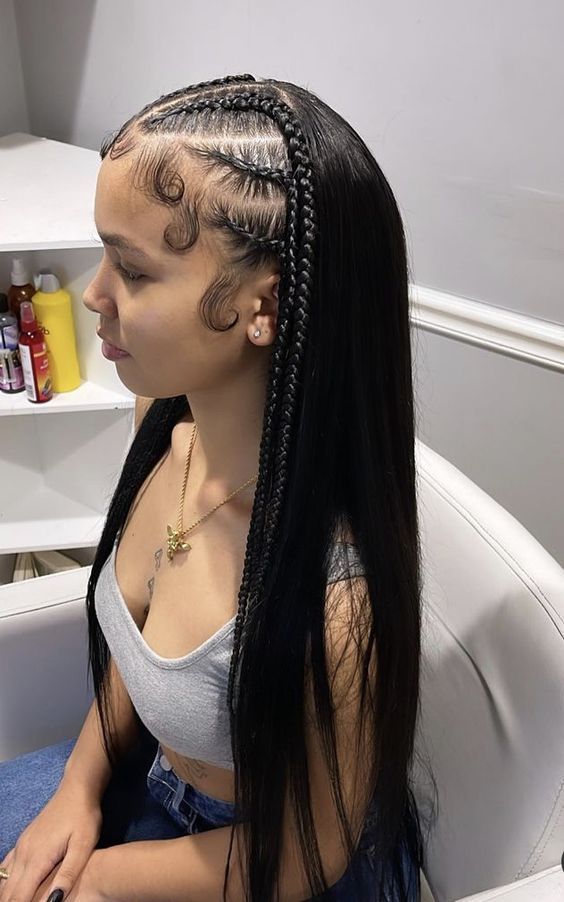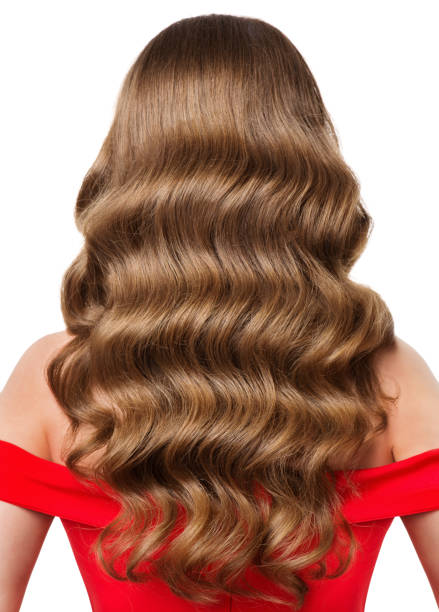If you’ve ever wished for longer, fuller hair, you’re not alone. Many people struggle with growing their hair to the desired length or volume. Fortunately, types of hair extensions can help you achieve the look you desire.
In this article, we will cover everything you need to know about different types of hair extensions. Choose one and dress up to slay. Scroll down to check them all out!
Real Human Hair Extensions vs. Synthetic Hair Extensions
Appearance and Texture
Real Human Hair Extensions closely mimic the appearance and texture of natural hair, offering a highly realistic look. They blend seamlessly with your own hair.
While synthetic extensions have improved in quality, they may not look as natural as human hair extensions. The texture can sometimes appear artificial.
Styling Versatility
Human hair extensions offer extensive styling versatility. You can use heat styling tools, apply dyes or treatments, and achieve a wide range of hairstyles.
Styling synthetic extensions is more limited. They cannot withstand heat styling, and attempts to do so can damage or melt the fibers.
Durability
With proper care, human hair extensions are highly durable and can last for a year or longer. Regular maintenance is essential to prolong their lifespan.
Synthetic extensions have a shorter lifespan compared to human hair extensions. They may last for a few months with proper care but tend to wear out sooner.
Comfort
Human hair extensions are lightweight and comfortable to wear. They feel natural against the scalp and do not typically cause discomfort.
Synthetic extensions are also lightweight and comfortable, although some individuals may find them slightly less natural-feeling compared to human hair.
Affordability
Human hair extensions are generally more expensive due to their natural origin and quality. They may be a higher initial investment.
Synthetic extensions are more budget-friendly and cost-effective, making them accessible to a wider range of consumers.
Maintenance
Proper maintenance is crucial for human hair extensions to retain their quality. This includes regular washing, conditioning, and styling.
Synthetic extensions require less maintenance since they come pre-styled. However, they should still be washed and cared for to extend their lifespan.
Color Variety
The color variety for human hair extensions is vast, but it may not be as extensive as synthetic options. You can also dye human hair extensions to match your specific shade.
Synthetic extensions offer a wide range of colors and textures, providing creative options for those who enjoy experimenting with different looks.
Types of Hair Extensions
There are several types of hair extensions available in the market, and each type has its own unique features and benefits. Below are some common types of hair extensions:
Clip-in Hair Extensions
Clip-in hair extensions are a popular choice for those who want temporary hair extensions. These extensions are attached to your hair using small clips and can be easily removed whenever you want. Clip-in hair extensions come in various lengths, styles, and colors, making them easy to use for any occasion.
Tape-in Hair Extensions
Tape-in hair extensions are semi-permanent and are applied by attaching a thin strip of adhesive tape to your natural hair. This method is ideal for individuals with thin hair as the tape creates a flat and seamless look. Unlike clip-in extensions, tape-in extensions can last up to six to eight weeks, depending on how well you maintain them.
Sew-In or Weave Hair Extensions
Weave hair extensions are one of the oldest types of hair extensions, and they remain popular today. This extension is achieved by braiding your natural hair into cornrows and sewing wefts of hair onto the braids. Weave hair extensions can last up to three months.
Micro Ring or Micro-Bead Hair Extensions
Micro Ring hair extensions involve attaching small metal rings to your natural hair and then threading a bundle of hair through the ring. The hair is then clamped down on the ring, holding it in place. This method is relatively gentle on your hair, making it ideal for those with fine or thin hair. Micro Ring hair extensions can last up to three to four months.
Fusion or Bonded Hair Extensions
Fusion hair extensions are applied by melting a keratin bond to your natural hair using a heating tool. This method creates a strong and durable bond, making it ideal for people who lead an active lifestyle. However, this method can be expensive and time-consuming.
Comparisons of Hair Extensions
While there are several types of hair extensions available, choosing the right one can be challenging. Below are some comparisons between different types of hair extensions that can help you make an informed decision:
Temporary vs. Semi-Permanent
If you’re looking for temporary extensions for a one-time event or occasion, clip-in extensions are an excellent choice. On the other hand, if you want something more long-lasting, semi-permanent extensions like tape-in, weave, micro ring, or fusion hair extensions are a better option.
Cost
The cost of hair extensions varies depending on the type and quality of hair used. Clip-in hair extensions tend to be the most affordable, while fusion hair extensions are the most expensive.
Maintenance
Maintaining your hair extensions is essential to ensure they look great and last as long as possible. Tape-in hair extensions require minimal maintenance, while weave and micro ring hair extensions need to be tightened every six to eight weeks. Fusion hair extensions take longer to install and require more maintenance.
Advice on Choosing Hair Extensions
Choosing the right type of hair extension can be overwhelming, but here are some tips to help you make an informed decision:
Choose high-quality hair
Invest in high-quality hair extensions as these tend to last longer and look more natural than cheaper alternatives.
Consider your lifestyle
Consider your lifestyle when choosing hair extensions. If you lead an active lifestyle, you may want to opt for a more durable type of extension like fusion hair extensions.
Consult with a professional
Consult with a professional stylist before choosing a type of hair extension, as they can help you choose the best option for your hair type and lifestyle.
Take care of your extensions
To ensure your extensions last as long as possible, follow the manufacturer’s instructions regarding washing, styling, and maintenance.
Choose a reputable supplier
Choose a reputable supplier when purchasing hair extensions to ensure you receive high-quality hair that matches your natural hair color and texture.
FAQs
- Are hair extensions safe to use? Yes, hair extensions are generally safe to use. However, it’s essential to choose a reputable supplier and have them installed by a professional stylist.
- Can I style my hair extensions like natural hair? Yes, you can style your hair extensions just like your natural hair. However, avoid using excessive heat or chemicals on them to prolong their lifespan.
- How long do hair extensions last? The lifespan of hair extensions varies depending on the type of extension and how well you maintain them. Clip-in extensions can last up to six months, while semi-permanent extensions like tape-in, weave, micro ring, or fusion hair extensions can last up to three to four months with proper care.
- Can I color or dye my hair extensions? In most cases, it is not recommended to color or dye your hair extensions yourself. Hair extensions are often pre-treated and colored, so attempting to change the color can result in damage. If you want a different shade, consult with a professional stylist who specializes in working with hair extensions.
- Can I swim or exercise with hair extensions? Yes, you can swim and exercise with hair extensions, but it’s important to take some precautions. For swimming, it is best to tie your hair up or wear a swimming cap to prevent tangling. After swimming or exercising, make sure to thoroughly rinse and dry your extensions to prevent any damage or matting.
Final Takeaway
Hair extensions offer a versatile solution for achieving longer and fuller hair. With various types of hair extensions available, you can choose the option that suits your needs and preferences. Whether you opt for clip-in, tape-in, weave, micro ring, or fusion hair extensions, each type has its own advantages and considerations. By considering factors such as cost, maintenance, and lifestyle, you can find the perfect hair extensions to enhance your natural beauty and boost your confidence.
